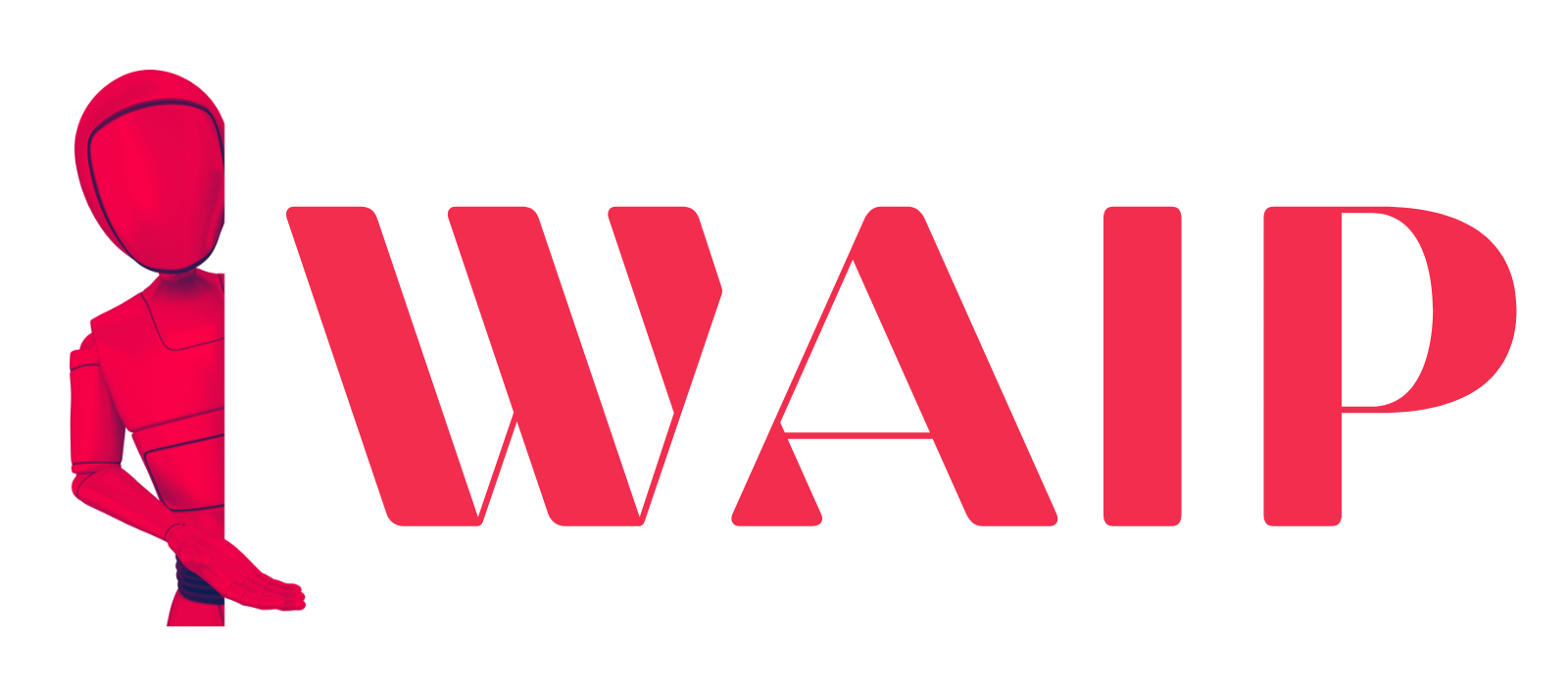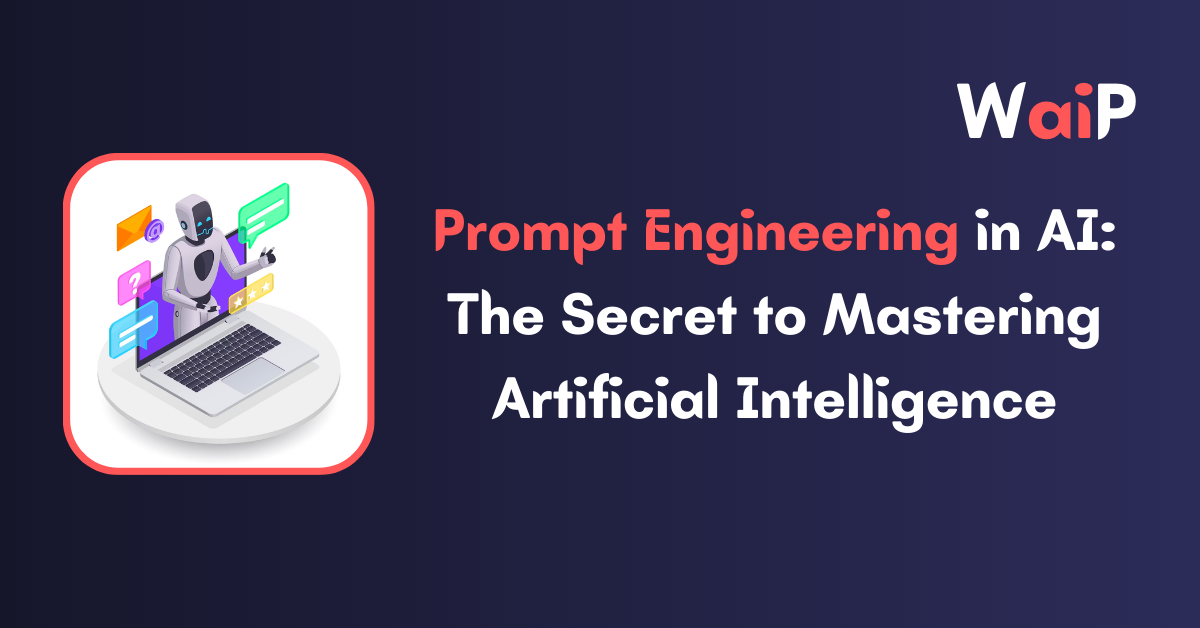Diving into the world of artificial intelligence (AI), we come across the promising domain of prompt engineering in AI.
Simply put, prompt engineering is the art and science of crafting instructions – or prompts – to guide AI models in accomplishing tasks, ranging from text generation and language translation to creative content writing and informative answering.
In our increasingly AI-dependent era, the value of prompt engineering in AI is paramount. It provides the crucial directional cues that powerful AI models need to produce precise results. Join us as we journey into the intricacies of this essential field in AI.
What is Prompt Engineering?
Prompt engineering is a fascinating niche within Artificial Intelligence (AI), focusing on creating ‘prompts’ or instructions that guide AI models towards generating desired responses. These prompts are short text pieces that steer the AI’s output – think of asking an AI model to “Write a poem about love” or “Translate this sentence from English to French.”
These prompts play a critical role in shaping the behavior of AI models. They help in diverse tasks, from generating text and translating languages to crafting creative content or answering questions informatively. As AI language models grow more advanced, their dependency on well-crafted prompts increases, making prompt engineering in AI an indispensable future growth.
By strategically creating prompts, engineers can influence the AI’s performance, ensuring accuracy, fluency, and high-quality output across various tasks. In a nutshell, prompt engineering is the key to harnessing AI’s full potential.
History and Evolution of Prompt Engineering in AI
Prompt engineering in AI art of creating instructions to shape AI model responses, has evolved over time to play a vital role in AI language models. These instructions, known as prompts, cover various tasks, like text generation, language translation, or producing informative responses.
The early stages of prompt engineering were often ad hoc and lacked standardization. Prompts were created individually, each tailored to a specific task without a broad understanding of their overall impact on AI behavior. This approach led to varied results, making it challenging to improve the performance of AI models consistently.
Over time, the field started recognizing the need for a more structured, standardized approach. This was driven by the growing understanding of how carefully designed prompts could significantly enhance AI model performance, leading to more accurate, fluent, and high-quality outputs.
Today, prompt engineering continues to evolve, working towards developing novel techniques for crafting prompts and striving to standardize methods. This will facilitate comparison of results across different studies and establish best practices. All these developments have the potential to make AI more user-friendly, significantly changing the way we interact with these models.
How Does Prompt Engineering in AI Work?
Delving into prompt engineering’s workings, we find a blend of art and science used to direct the behavior of AI language models. This process involves using concise pieces of text or ‘prompts,’ guiding the model towards generating a specific output. Here’s a simple breakdown:
- Prompts – The Inputs: A typical prompt could be “Write a poem about love” or “Translate this sentence from English to German.” These prompts provide clear instructions about the desired output, and the AI model uses its language understanding to deliver it.
- Training – The Foundation: AI language models like GPT-3 and GPT-4 base their responses on extensive training on large text and code datasets. These datasets provide numerous examples of language use for various tasks. When an AI model receives a prompt, it matches the patterns in the prompt with those in its training dataset, generating an output that aligns with the prompt.
- Guiding Principles of Prompt Engineering in AI:
- Clarity and Specificity: The prompt must be clear and specific, outlining the exact type of output required.
- Consistency with Training Dataset: Language used in prompts should mirror the language in the training dataset to ensure the model’s output aligns with the prompt.
- Conciseness: Keeping prompts brief helps the model focus on the key information, generating relevant output.
Prompt engineering, hence, emerges as a powerful tool, controlling AI model behavior and ensuring production of desired results. As AI models continue to advance, the significance of prompt engineering is only expected to grow.
Importance of Prompt Engineering in Conversational AI
In the realm of conversational AI, which includes chatbots, virtual assistants, and other interactive AI systems, prompt engineering in AI plays a critical role. Here’s why:
- Guidance for AI: Prompts are essentially instructions that guide AI models, controlling their behavior. For instance, a prompt could ask a chatbot to compose a love poem or translate a sentence from English to Arabic.
- Impact on Desired Results: Carefully crafted prompts ensure that AI systems generate the desired output. This is crucial for tasks that may be challenging or time-consuming for humans, like creative writing or language translation.
- Application in Various Interactive AI Systems: From chatbots and virtual assistants to AI systems in education, healthcare, and customer service, prompt engineering helps shape the AI’s behavior to suit diverse roles and tasks.
- Enhancing Conversational AI Capabilities: Prompt engineering helps to improve conversational AI in several ways:
- Improved Accuracy: Crafting precise prompts enhances the accuracy of AI responses.
- Increased Flexibility: Using varied prompts can customize the AI system’s responses to cater to different tasks and users.
- Enhanced Creativity: Prompts encouraging creativity can help AI systems generate more engaging and interesting content.
Challenges in Prompt Engineering in AI
Prompt engineering, while powerful, is not without its hurdles. Some of these challenges include:
- Lack of Standardization: The absence of a standardized approach makes it challenging to compare different studies or establish best practices.
- Ad Hoc Approach: Prompts are often crafted on a case-by-case basis, leading to inconsistent results and difficulties in improving AI model performance.
- Potential Bias: Prompts could contain inherent biases, which could lead to AI models generating biased outputs. For example, a gender-biased prompt could result in gender-biased AI responses.
- Safety and Security Concerns: Prompts can potentially be used to create harmful or offensive output. For instance, a prompt asking an AI model to write a hateful poem could lead to offensive content generation.
Efforts are being made to overcome these challenges, such as standardizing prompt engineering, automating prompt creation, developing bias detection tools, and introducing safety and security measures. These strides aim to minimize the challenges and maximize the benefits of prompt engineering, making AI systems more effective and safe.
Future of Prompt Engineering in AI
As we glance into the future of prompt engineering, several promising developments and applications emerge. These include:
- Improved Accuracy and Fluency: With continued progress in prompt engineering techniques, AI models are expected to generate more accurate and fluent text, enriching its use in creative content, language translation, and providing informative answers.
- Enhanced Creativity: Prompt engineering could amplify the creativity of AI models. Prompts encouraging creative thinking can guide AI systems to generate more engaging and unique content.
- New Applications: Being a relatively new field, prompt engineering in AI has several unexplored applications, from creating new art forms and educational tools to improving customer service efficiency.
Looking forward to advancements in prompt engineering, we can expect:
- New Techniques: Ongoing research will likely lead to novel techniques for more precise control of AI model behavior, improving accuracy, fluency, and creativity.
- Standardized Approaches: As the field matures, standardization in prompt engineering methods will facilitate result comparisons and best practice development.
- Automated Tools: Automated tools to assist engineers in crafting effective prompts will streamline the process, saving time and effort.
These potential advancements could revolutionize our interaction with AI, opening up new and exciting applications for this technology.
Tips for Effective Prompt Engineering
To optimize the effectiveness of prompt engineering in AI, here are some crucial tips to keep in mind:
- Be Clear and Specific: Ensure your prompt clearly indicates the expected output. For example, if you need a love poem, specify both the theme and the style.
- Consistency in Language: Make sure the language used in your prompt matches the language in the training dataset. This enhances the consistency of the generated output.
- Keep it Concise: A brief, focused prompt helps the model center on vital information, leading to more relevant output.
- Experiment: Prompt engineering doesn’t follow a one-size-fits-all rule. Feel free to try different prompts and assess their effectiveness.
- Variety and Creativity: Using a diverse range of prompts and infusing creativity can lead to more innovative outputs from the AI model.
Remember, prompt engineering is both an art and a science, and these tips can help guide the creation of more effective prompts.
Conclusion
Prompt engineering, a vital discipline in the field of artificial intelligence, is reshaping our interactions with AI systems.
As the process of crafting instructions for AI to guide its output, it serves as a bridge between human needs and AI capabilities. This dynamic field faces challenges like the lack of standardization and potential bias, yet, the future is filled with promise.
Advances in this domain will bolster AI accuracy, flexibility, and creativity, opening new applications and transforming existing ones.
As AI continues to evolve and become an integral part of our lives, the role of prompt engineering is poised to grow, further bridging the gap between human imagination and AI’s vast potential. Whether in creating an engaging chatbot or generating creative content, prompt engineering’s influence is here to stay, paving the way for a future where AI is more accessible, beneficial, and aligned with our intentions.

![Best Mobile Games Your Should Try in 2024 [Trending Now] 2 Best Mobile Games](https://wideaiprompts.com/wp-content/uploads/2024/03/Best-Mobile-Games-330x220.webp)



![Best Mobile Games Your Should Try in 2024 [Trending Now] 9 Best Mobile Games](https://wideaiprompts.com/wp-content/uploads/2024/03/Best-Mobile-Games-150x150.webp)


